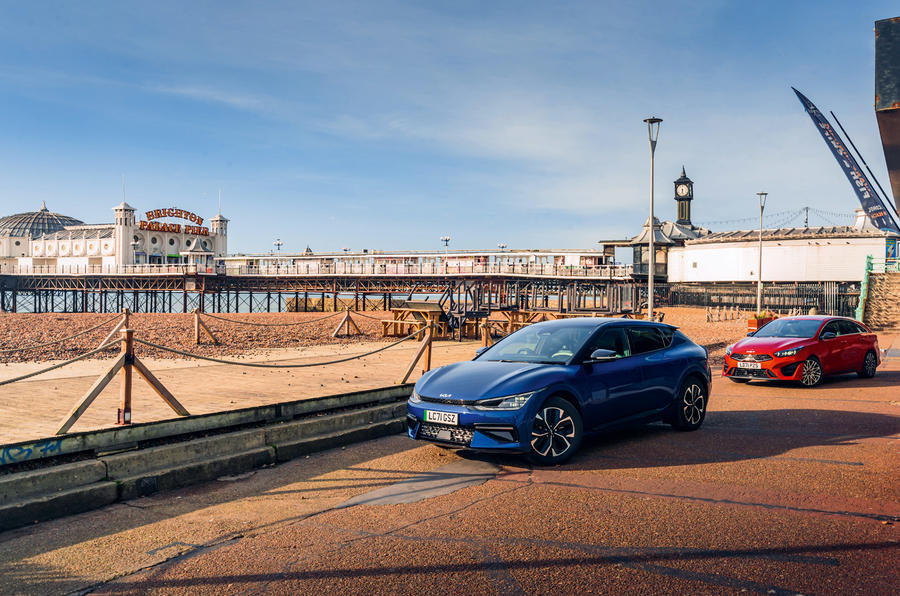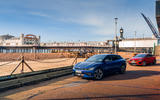10:15am, Madeira Drive, Brighton
It’s a balmy Monday morning on Brighton’s pebbly seafront. The walkers, cyclists and desperado electric scooterists are out in force, soaking up some unexpected February vitamin D. The cafe proprietors are sweeping floors, laying tables and getting ready for a brisk lunchtime trade. The weather is ideal – except if you were hoping for the sort of cold, wet, foreboding environment to set a tough challenge for an electric car on a long drive.
Thankfully, where we’re heading, we’re almost guaranteed some wintry smirr. It’s somewhere between 450 and 500 miles north from here to Glasgow, depending which way you go – and today we’re going in a Kia EV6, mostly just to find out how long it takes to cover that kind of distance on the UK road network in an EV in 2022.
This will be a bit of a race between tortoise and hare, except I’m very much hoping our hare doesn’t fall asleep under a tree. Photographer Max Edleston will be driving the trip in a Kia Proceed GT, which, with its 201bhp 1.6-litre turbo petrol engine and 53-litre tank, should make pretty short work of that kind of touring. And I will be doing the same in a single-motor, rear-wheel-drive, mid-spec EV6, taking my chances on the UK’s public EV charging infrastructure to find out if it really is as sparse and slow-growing as you so often hear.
This isn’t my first tilt at this peculiar all-electric reverse Brighton run. Twelve years ago, before motorway rapid chargers were a thing and when getting into three figures for mileage in any EV felt like an achievement, I made the very same trip. That was in a Mini E prototype, which came with less than 30kWh of usable battery capacity and only a ‘granny’ charging cable to top it up with. It took four days, and they were among the most anxious I’ve ever had in a car. However the EV6 does, then, I will know that it could be worse.
We linger by the shorefront shops to get our photos and video, and then at 10.45am we set our sat-navs, exchange steely looks and hit the road.







































Join the debate
Add your comment
I have an EV for everyday use, so please understand that I am generally supportive, but a hugely biased article like this does Autocar no credit. Others have covered the cost and convenience aspects, so I won't rehash those. But I found this line particularly irksome: "How many people do you know who would drive further than 200 miles without a break?" Surely most families, particularly those with multiple drivers, do this? I don't need or want to stop for a coffee every 200 miles when driving a long distance - I just want to get the journey done before there's some family meltdown. EVs and the infrastructure need to overcome the long-journey problem before they can supplant ICE vehicles. When I can drive, say, from Calais to the Alps at the permitted 130kmh with minimal time stationary then I reckon that time will have come. How that's achieved (hotels with bookable chargers, fast-chargers that are genuinely fast, solid-state batteries, the reintrduction of motorail??) doesn't matter to me - but I really hope that it comes soon.
Compare this to the vlog by Furious Driving recently, testing a couple of Renault EVs. Both sounded like a complete nightmare.
I would have loved this feature to have also included a Tesla Model 3 with access to the supercharger network. I suspect that many people buy the Tesla because of the charging network mitigating their range anxieties.